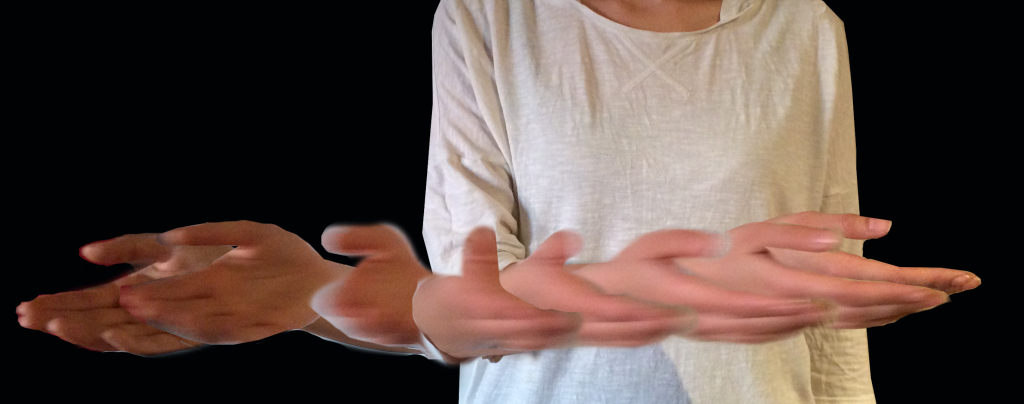
Gestures provide a “window on the mind” (Goldin-Meadow, 2003)
To be able to answer this question, I started by studying language and gesture production systems, as gestures provide a “window on the mind”. I targeted the Persian language as it is understudied and also I speak it. I collected data from many Farsi-speaking adults as they described different types of motion events (jumping toward a door). I particularly focused on how they phrased and verbalized the events and how they gestured as they talked (gestures can reflect thought processes). I found that speakers of Farsi often gestured about path (the trajectory of motion, like up) alone, regardless of whether or how they mentioned manner (how the action is performed, like jumping) in speech. Which meant that path was a particularly salient aspect of the representation of motion events for Farsi speakers. Once I investigated the linguistic structure of Farsi, I found out that Farsi has a very limited list of manner verbs, which can explain why manner information was less salient in the gestures of Farsi-speakers and thus in their mental process. Click here to see my published work on this topic!
When I was coding the language and gesture data (described above), I noticed the extent to which people were disfluent in their verbal utterances. Many studies have shown that in every 100 token words, there could be 26 cases of disfluencies! I also found a similar rate among my data. However, the interesting point was that gestures signaled an upcoming speech problem even before the disfluencies were seen at the surfaces of overt speech. Meaning that, right before the overt speech would become disfluent, the gesture would be paused or repeated. Moreover, by digging into disfluent episodes I found that in cases where the disfluent speech was accompanied with a gesture, the outcome of speech would become fluent much more than cases where there was no gesture accompanying. This would mean that gesture and language are two separate systems that are interrelated at the conceptual or planning level. The conclusion of this study was that speech-related problem do not necessarily cause gesture problems unless there is an issue at the message planning level. Click here to see my published work on this topic!
In my next step, I collected data from Farsi-speaking adults who were survivors of stroke but were suffering from a language impairment condition known as aphasia. Again, I found that the gestural system could remain functional even when language production was severely impaired. Patients heavily relied on iconic gestures (gestures representing objects or actions) to compensate for their language impairment. In fact, the degree of this compensation mechanism was positively correlated with the extent of language impairment. Patients also benefited from gestures in cuing themselves in retrieving the words that they could not initially produce. Click here to see my published work on this topic!
Take home: language shapes the way our mental inventory is organized. In specific cases of aphasia, where the language is lost, the representations are not necessarily lost. However, the ability to access or retrieve those representations could be damaged and can cause difficulty during communication.